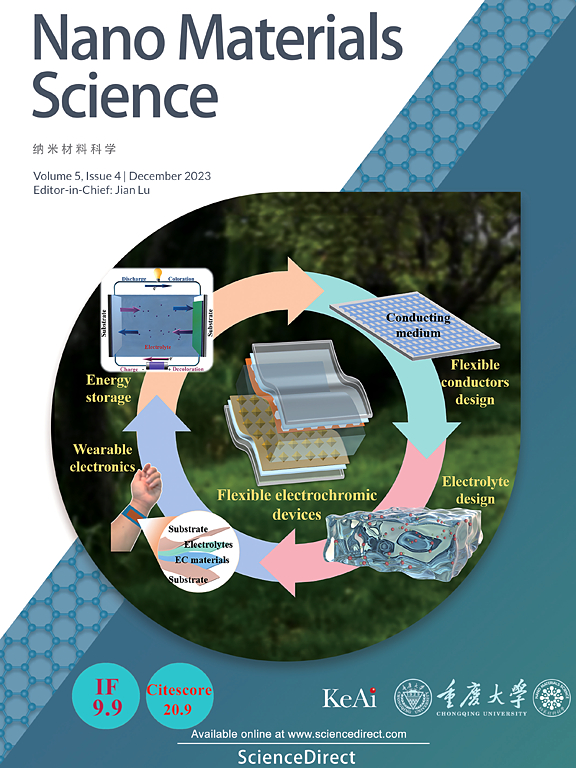ZnO和Ti3C2T MXene衍生TiO2的0D–2D异质结构在室温下的协同耦合用于增强NO2检测
IF 9.9
2区 材料科学
Q1 Engineering
引用次数: 0
摘要
2D MXenes由于其高表面体积比,对于制造在室温(RT)下工作的高精度气体传感器非常有吸引力。然而,选择性有限和灵敏度低仍然是其进一步应用的长期挑战。本文通过将ZnO纳米粒子集成到Ti3C2Tx mxene衍生的TiO2纳米片(指定为ZnO@M−TiO2)上,实现了0D-2D异质结构的自组装,从而实现了高灵敏度的NO2检测。ZnO纳米粒子不仅可以作为间隔层防止M - TiO2纳米片的重新堆积,保证气体分子的有效转移,而且还可以通过对电子的捕获效应提高传感器的灵敏度。同时,M−TiO2纳米片促进气体扩散,实现传感器的快速响应。得益于各组分的协同作用,ZnO@M−TiO2 0D-2D异质结构传感器在室温下对低浓度NO2表现出了显著的灵敏度和良好的选择性,为MXene衍生物的传感应用提供了便利,为安全保障和环境监测领域高性能气体传感器的开发提供了新的途径。本文章由计算机程序翻译,如有差异,请以英文原文为准。
Synergistic coupling of 0D–2D heterostructure from ZnO and Ti3C2Tx MXene-derived TiO2 for boosted NO2 detection at room temperature
2D MXenes are highly attractive for fabricating high-precision gas sensors operated at room temperature (RT) due to their high surface-to-volume ratio. However, the limited selectivity and low sensitivity are still long-standing challenges for their further applications. Herein, the self-assembly of 0D–2D heterostructure for highly sensitive NO2 detection was achieved by integrating ZnO nanoparticles on Ti3C2Tx MXene-derived TiO2 nanosheets (designated as ZnO@M−TiO2). ZnO nanoparticles can not only act as spacers to prevent the restacking of M−TiO2 nanosheets and ensure effective transfer for gas molecules, but also enhance the sensitivity of the sensor the through trapping effect on electrons. Meanwhile, M−TiO2 nanosheets facilitate gas diffusion for rapid sensor response. Benefiting from the synergistic effect of individual components, the ZnO@M−TiO2 0D–2D heterostructure-based sensors revealed remarkable sensitivity and excellent selectivity to low concentration NO2 at RT. This work may facilitate the sensing application of MXene derivative and provide a new avenue for the development of high-performance gas sensors in safety assurance and environmental monitoring.
求助全文
通过发布文献求助,成功后即可免费获取论文全文。
去求助
来源期刊

Nano Materials Science
Engineering-Mechanics of Materials
CiteScore
20.90
自引率
3.00%
发文量
294
审稿时长
9 weeks
期刊介绍:
Nano Materials Science (NMS) is an international and interdisciplinary, open access, scholarly journal. NMS publishes peer-reviewed original articles and reviews on nanoscale material science and nanometer devices, with topics encompassing preparation and processing; high-throughput characterization; material performance evaluation and application of material characteristics such as the microstructure and properties of one-dimensional, two-dimensional, and three-dimensional nanostructured and nanofunctional materials; design, preparation, and processing techniques; and performance evaluation technology and nanometer device applications.
 求助内容:
求助内容: 应助结果提醒方式:
应助结果提醒方式:


